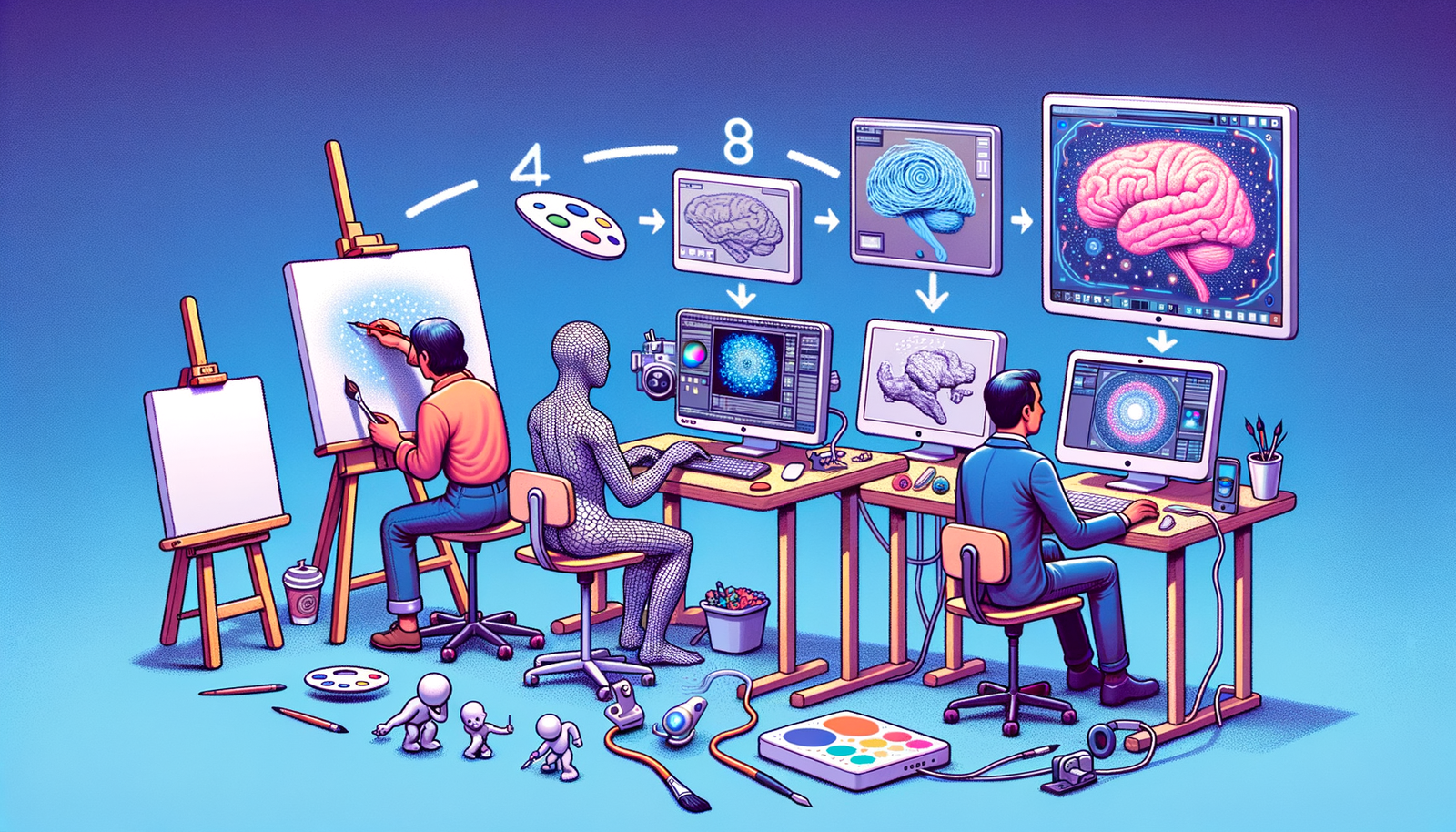Your Cart is Empty
Customer Testimonials
-
"Great customer service. The folks at Novedge were super helpful in navigating a somewhat complicated order including software upgrades and serial numbers in various stages of inactivity. They were friendly and helpful throughout the process.."
Ruben Ruckmark
"Quick & very helpful. We have been using Novedge for years and are very happy with their quick service when we need to make a purchase and excellent support resolving any issues."
Will Woodson
"Scott is the best. He reminds me about subscriptions dates, guides me in the correct direction for updates. He always responds promptly to me. He is literally the reason I continue to work with Novedge and will do so in the future."
Edward Mchugh
"Calvin Lok is “the man”. After my purchase of Sketchup 2021, he called me and provided step-by-step instructions to ease me through difficulties I was having with the setup of my new software."
Mike Borzage
Design Software History: Evolution of Design Software: Transforming Art and Sculpture Through Technology
August 22, 2024 6 min read


History of Design Software in Art and Sculpture
Introduction to Design Software in Art and Sculpture
Historical Context
The creation of art and sculpture has evolved significantly over centuries. Traditional methods such as chiseling stone, molding clay, and painting on canvases have long been the foundation of artistic expression. However, these methods came with inherent limitations and challenges, such as the physical labor required, the time-consuming processes, and the difficulty in making precise adjustments once a piece was underway.
Despite these limitations, artists have continually pushed the boundaries of their mediums, seeking new ways to express their visions. The advent of digital technology in the late 20th century marked a revolutionary shift, offering new tools and methodologies that would transform the landscape of art and sculpture.
Emergence of Digital Tools
The initial adoption of computers in creative fields began in the 1960s and 1970s when early computer graphics systems were developed. These systems were rudimentary by today's standards but represented significant innovations at the time. Artists and designers began to explore the possibilities of digital creation, moving from manual processes to digital design.
One of the earliest examples of this shift is the work of Charles Csuri, a pioneer in computer graphics who began creating digital art in the 1960s. His work paved the way for future generations of digital artists and highlighted the potential of computers as a new medium for artistic expression.
Key Technological Innovations
2D Drawing and Vector Graphics
The introduction of software like Adobe Illustrator in 1987 marked a significant milestone in the history of design software. Adobe Illustrator, developed by Adobe Systems, allowed artists to create vector graphics, which are composed of paths defined by mathematical equations rather than pixels. This innovation enabled artists to create scalable, high-quality images that could be easily edited and manipulated.
Vector graphics software had a profound impact on graphic design and preliminary sketching. It provided designers with new tools to create precise, detailed illustrations, and it streamlined the design process by allowing for easy revisions and adjustments. Other notable vector graphics software includes CorelDRAW and Inkscape, both of which have contributed to the widespread adoption of digital tools in the art world.
3D Modeling Software
The development of 3D modeling software represented another significant leap forward in the realm of digital art and sculpture. Software such as Blender, ZBrush, and Rhino revolutionized the way artists create three-dimensional works. Blender, an open-source 3D creation suite, has been particularly influential due to its accessibility and robust feature set.
ZBrush, developed by Pixologic, introduced a new approach to digital sculpting with its powerful, intuitive tools that mimic traditional sculpting techniques. Rhino, developed by Robert McNeel & Associates, is renowned for its precision and versatility, making it a popular choice among architects and industrial designers.
The benefits of 3D modeling for sculpture creation are numerous. Artists can experiment with different forms and structures without the constraints of physical materials. The ability to render and visualize a piece before it is physically created allows for greater precision and creativity. Additionally, 3D modeling software has facilitated the integration of traditional and digital techniques, enabling artists to combine the best of both worlds.
Simulation and Rendering
Advancements in photorealistic rendering techniques have further expanded the possibilities of digital art. Tools like Autodesk Maya, a comprehensive 3D animation and modeling software, have set new standards for visualization and simulation. Maya's powerful rendering engines allow artists to create highly realistic images and animations, making it a staple in the film, gaming, and advertising industries.
Photorealistic rendering involves simulating the behavior of light and materials to create images that closely resemble real-world objects. This technology has significant implications for visualization, allowing artists and designers to present their work in the most lifelike manner possible. Other notable rendering software includes 3ds Max, developed by Autodesk, and Cinema 4D, developed by MAXON, both of which have contributed to the advancement of digital visualization.
Influential Figures and Companies
Pioneers in Digital Art and Sculpture
The contributions of pioneering artists like Charles Csuri and Harold Cohen have been instrumental in the development of digital art. Charles Csuri, often referred to as the father of digital art, began experimenting with computer graphics in the 1960s. His innovative work demonstrated the potential of computers as a new medium for artistic expression and laid the groundwork for future advancements in the field.
Harold Cohen, another key figure in the history of digital art, developed AARON, an artificial intelligence program capable of creating original works of art. Cohen's work explored the intersection of art and technology, challenging traditional notions of creativity and authorship. His contributions have had a lasting impact on the field, inspiring new generations of artists to explore the possibilities of digital creation.
Leading Software Companies
Several companies have played a crucial role in driving innovation in design software. Adobe Systems, founded in 1982 by John Warnock and Charles Geschke, has been at the forefront of digital design tools. Adobe's suite of products, including Photoshop, Illustrator, and After Effects, has become the industry standard for graphic design, illustration, and animation.
Autodesk, founded in 1982 by John Walker and a group of programmers, has also been a major player in the development of design software. Autodesk's products, such as AutoCAD, Maya, and 3ds Max, are widely used in architecture, engineering, and entertainment. The company's commitment to innovation has resulted in powerful tools that have transformed the way designers and artists work.
Pixologic, the company behind ZBrush, has made significant contributions to the field of digital sculpting. Founded in 1997 by Ofer Alon and Jack Rimokh, Pixologic introduced a new approach to digital sculpting with ZBrush's intuitive and powerful tools. The software has become a favorite among digital artists, allowing for the creation of highly detailed and complex sculptures.
Collaborations between technology companies and artists have also been instrumental in driving innovation. These partnerships have facilitated the development of tools that meet the specific needs of artists, resulting in more intuitive and powerful software. For example, Adobe's collaboration with digital artists has led to the development of features like brush customization and advanced layer management in Photoshop.
Current Trends and Future Directions
Integration with Emerging Technologies
The integration of emerging technologies like AI and machine learning is shaping the future of digital art and sculpture. Generative art, which involves the use of algorithms to create art, is gaining popularity. Artists are using AI to generate new and unique forms, pushing the boundaries of creativity and challenging traditional notions of authorship.
Virtual Reality (VR) and Augmented Reality (AR) are also having a significant impact on sculpture visualization. VR allows artists to create and interact with their work in a virtual environment, offering new ways to explore and manipulate forms. AR, on the other hand, enables artists to overlay digital elements onto the physical world, providing new opportunities for interactive and immersive experiences.
Community and Open Source Movements
The influence of platforms like GitHub has been profound in the development of design software. GitHub, a platform for version control and collaboration, has facilitated the growth of open-source projects, allowing developers and artists to collaborate on tool development. Open-source projects like Blender have benefited immensely from community contributions, resulting in powerful and versatile tools that are accessible to everyone.
Open-source software has made significant contributions to the art community, providing artists with free and customizable tools. These tools have democratized access to professional-grade software, enabling artists from all backgrounds to create high-quality work. The collaborative nature of open-source projects has also fostered a sense of community, with artists and developers working together to push the boundaries of what is possible.
Prospects for the Future
The future of digital sculpting tools looks promising, with potential advancements in areas like AI-driven design, immersive environments, and enhanced interactivity. AI-driven design could enable artists to create more complex and unique forms by leveraging machine learning algorithms. Immersive environments, powered by VR and AR, could offer new ways to interact with and explore digital sculptures.
Predictions for the future suggest that technology will continue to transform art and sculpture in unprecedented ways. As tools become more sophisticated and accessible, artists will have greater freedom to experiment and innovate. The integration of emerging technologies will likely result in new forms of artistic expression, challenging traditional boundaries and opening up new possibilities for creativity.
In conclusion, the history of design software in art and sculpture is a testament to the transformative power of technology. From the early days of computer graphics to the current trends in AI and immersive environments, design software has continually evolved, offering new tools and possibilities for artists. As we look to the future, it is clear that technology will continue to play a crucial role in shaping the landscape of art and sculpture.
Also in Design News

ZBrush Tip: Optimizing Sculpting Workflow with ZBrush Adaptive Skin
April 25, 2025 2 min read
Read More
Revit Tip: Enhancing Revit Geometry Creation with Dynamo: Key Tips and Best Practices
April 25, 2025 2 min read
Read More
AutoCAD Tip: Optimizing AutoCAD Efficiency Through Status Bar Customization
April 25, 2025 2 min read
Read MoreSubscribe
Sign up to get the latest on sales, new releases and more …


